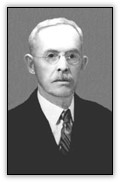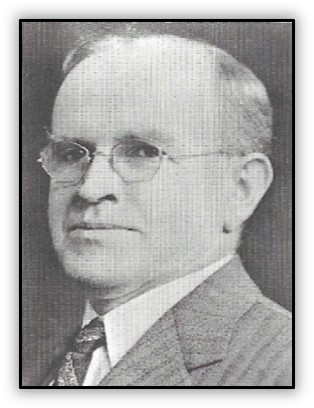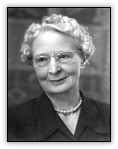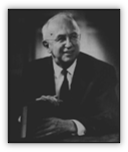Bringing our history alive
Canadian Pioneers in Plant Plant Pathology and Mycology
- First Canadian Plant Pathologist – William P. Fraser (1852-1908)
- First Canadian Woman Plant Pathologist – Margaret Newton (1887-1971)
- John Hubert Craigie (1887-1989)
- Dixon Lloyd Bailey (1896-1984)
First Canadian Plant Pathologist
William P. Fraser (1852-1908)

While there were many professional and amateur botanists reporting plant diseases, W.P. Fraser is considered the first Canadian-born plant pathologist-mycologist.
Fraser began as an amateur collector of fungi, with an emphasis on the plant rusts, while teaching school in his home province, Nova Scotia. He was a pioneer in plant pathology, and his research had a particular focus on the physiological races of wheat rust, heteroecious forest rust fungi and the study of root and smut diseases of grasses.
Fraser taught plant pathology and mycology, first at McGill University and then the University of Saskatchewan where he established the first plant pathology laboratory in Western Canada. He also created the first wheat uniform rust nurseries and provided the rust collections for race studies
First Canadian Woman Plant Pathologist
Margaret Newton (1887-1971)
Margaret Newton began her career as a teacher, but later decided to enroll at McMaster University in an art program. However, she soon changed to the agricultural faculty at Macdonald College of McGill University under the supervision of W. P. Fraser. She became the first woman to graduate from Macdonald College with a MS degree in agriculture in 1919.
Newton worked jointly with wheat breeder W. P. Thompson at the University of Saskatchewan and E. C. Stakman at the University of Minnesota on her doctorate on wheat stem rust and became the first Canadian woman to receive a PhD in agricultural science in 1922.
After completing her PhD, Newton became a Professor at the University of Saskatchewan from 1922 to 1925. In 1925, she was invited by the federal minister of agriculture to take charge of the new Dominion Rust Research Laboratory at the University of Manitoba, and in the 1930s, she was invited to Russia by Nikolai Vavilov to train scientists at the now renowned Vavilov Institute.
Newton received an Outstanding Achievement Award from the University of Minnesota and an honorary doctorate from the University of Saskatchewan, and she was registered as a Person of National Historic Significance in Canada in 1997.
John Hubert Craigie (1887-1989)

John Hubert Craigie fought for two years in the trenches during WWI with the Canadian Army after which he was deployed to India for an additional year. He completed his undergraduate degree at Harvard followed by graduate degrees at the Universities of Minnesota and Manitoba under A. H. R. Buller.
Craigie performed classic research on the heterothallic nature of rusts and the function of basidiospores and pycnia in the rust fungi, and he published his results in Nature. He was the head of the Rust Lab from 1928 to 1945, and then became chief of the Botany Division.
Craigie was the recipient of many honours and awards during his career. He was given honorary Doctoral awards from the University of British Columbia, the University of Saskatchewan, Dalhousie University, and the University of Manitoba. He was also a fellow of the Royal Society and a recipient of the Flavelle medal. In 1979, he was inducted as an Officer into the Order of Canada.
Craigie stayed active even during his retirement, during which he published three additional papers on the role on the rust life cycle.
Craigie was a Charter Member of CPS and served as President of CPS from 1934 to 1935. He and was the first recipient of the CPS Award for Outstanding Research, presented at the 50th Anniversary Meetings in Lethbridge in 1979.
Dixon Lloyd Bailey (1896-1984)
Dixon L. Bailey, was born 9 September 1896 in Winchester, Ontario, and obtained his early education in Morrisburg. He graduated from Queen’s University in 1918 with a BA, studied for a year at Cornell University where he obtained his MS, and then, in 1923, received his PhD from the University of Minnesota. Although Bailey was offered a position in plant pathology at the University of Minnesota, he felt that his place was in Canada where he became first Director of the Dominion Rust Research Laboratory in Winnipeg. He was instrumental in establishing the Laboratory as the outstanding center for research in cereal rusts. The discovery of the role of pycnia in the life cycle of the rust fungi, as well as classic studies in genetics, cytology, and epidemiology of these important pathogens were part of the program in the Laboratory at that time.
Bailey left Winnipeg to accept a position at the University of Toronto where he was asked to establish a graduate program for the education of plant pathologists. Canadian Universities were unable to meet the demand for plant pathologists to staff the expanding government research laboratories in Canada at that time. Additionally, Canadians studying at universities in the United States tended to stay abroad after they received their advanced degrees. In the 35 years until he retired in 1965, more than 40 students studied for their PhD under Bailey’s direction. At one time, more than half of the pathologists staffing Canadian university and government laboratories were trained by him; Bailey was truly the “father of plant pathology” in Canada.
In addition to his excellence as a teacher, Bailey and his students carried out research on a wide variety of crops, including cereals, forages, vegetables, ornamentals, and tree fruits which involved the full range of bacterial, viral, and fungal pathogens. His studies on variation in pathogenicity of Cladosporium fulvum are classic.
Among his many honors are included: Fellow of the Royal Society of Canada, Fellow of the American Phytopathological Society, Certificate of Merit from the Botanical Society of America, the E. C. Stakman Award, Honorary Doctorate of Laws from the University of Minnesota, and Sesquicentennial Professor by the University of Toronto.
Bailey was a Charter member of the Canadian Phytopathological Society, served as its president from 1933 to 1934, and was named Fellow. The CPS created the Dr. and Mrs. DL Bailey Award in 1982 to honour excellence in teaching plant pathology in Canada.




